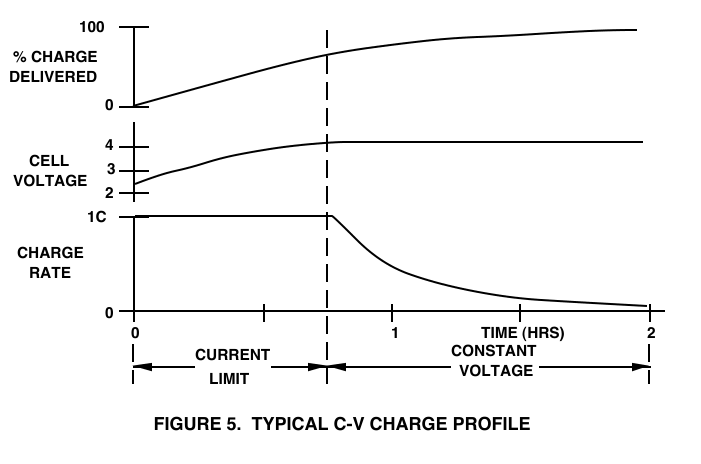If you try to apply a constant voltage across a heavily discharged cell it will draw an enormous current, this will heat-up the cell and will stress its structure.
This is true even if the voltage is the usual target voltage of the CV phase of a conventional charger, i.e. 4.2V±.05V per cell.
See this document from TI: Battery Charging (application note - TI literature number: SNVA557).
Excerpt:

Although the text reports the charging method in the initial phase as "Current-limited CV", from an electrical POV it is just a CC charging phase.
Moreover, you have another problem: LiIon cells don't lend themselves to be charged in series safely. The voltage you apply to the pack won't be shared equally by the cells, and this could result in overstressing some cells in pack (the cells which end up having the biggest share of the voltage).
Usually you need chargers that perform cell balancing during charging, i.e. they monitor and charge the cells individually.
To further reinforce those points, see this document from MIT about handling procedures for LiIon batteries.
Excerpts:
- Batteries must only be charged with a charger or charging method designed to safely charge cells or battery packs at the specified parameters. Be absolutely sure that the charger settings are correct for the battery pack being charged – both voltage and current settings.
- Never leave a battery pack unobserved during charging. Always stay in or around the charging location so that you can periodically check for any signs of battery or charger
distress. Occasionally check on output levels and balancing effectiveness.
- For series packs (2S and above) always balance charge with a charger capable of monitoring the condition of individual cells to prevent individual cells being overcharged. This charger
and the battery should be put on a heat-resistant, nonflammable and nonconductive surface. Fire-safe containers designed for Li-ion batteries are available. Never place them on a car seat, carpet or similar surface.
See also this article from DigiKey: A Designer's Guide to Lithium (Li-ion) Battery Charging.
Excerpts (emphasis mine):
Charging time (for a given current) is ultimately determined by the battery’s capacity. For example, a 3300 mAhr smartphone battery will take approximately twice as long to charge as a 1600 mAhr battery, when both are charged using a current of 500 mA. To take account of this, engineers define charging rates in terms of “C”, where 1 C equals the maximum current the battery can supply for one hour. For example, in the case of a 2000 mAhr battery, C = 2 A. The same methodology applies to charging. Applying a charge current of 1 A to a 2000 mAhr battery equates to a rate of 0.5 C.
It would seem to follow, then, that increasing the charging current will decrease the recharge time. This is true, but only to a certain degree. Firstly, ions have a finite mobility, so increasing the charging current past a certain threshold doesn’t shift them any quicker. Instead, the energy is actually dissipated as heat, raising the battery’s internal temperature and risking permanent damage. Secondly, unrestricted charging at a high current eventually causes so many ions to embed into the negative electrode that the electrode disintegrates and the battery is ruined.
Recent developments have significantly improved the ion mobility of the latest Li-ion cells, allowing the use of a higher charging current without dangerously raising the internal temperature. But even in the most modern products there is still a risk in overcharging because it is a direct result of the physical make-up of the cell. Consequently, Li-ion battery makers prescribe a strict charging regimen to protect their products from damage.
Carefully does it
Li-ion battery charging follows a profile designed to ensure safety and long life without compromising performance (Figure 2). If a Li-ion battery is deeply discharged (for example, to below 3 V) a small “pre-conditioning” charge of around 10% of the full-charge current is applied. This prevents the cell from overheating until such a time that it is able to accept the full current of the constant-current phase. In reality, this phase is rarely needed because most modern mobile devices are designed to shut down while there’s still some charge left because deep discharge, like overcharging, can damage the cell.
In all this, see the focus of not overcharging the cells. Without a current limiter a CV supply cannot guarantee that the maximum current won't be exceeded, since the charging current depends on the actual voltage applied to the cell and the internal state of charge. Even applying a voltage well below the nominal cell voltage (3.7V), say 3V, to a deeply discharged cell (say, 2V open-circuit voltage) could cause too much current to flow.
Unless you can guarantee that each cell in the pack is in a well defined state of charge before being connected to the CV charger (and this state is the same for each cell in the pack), you put the pack and yourself at risk.

